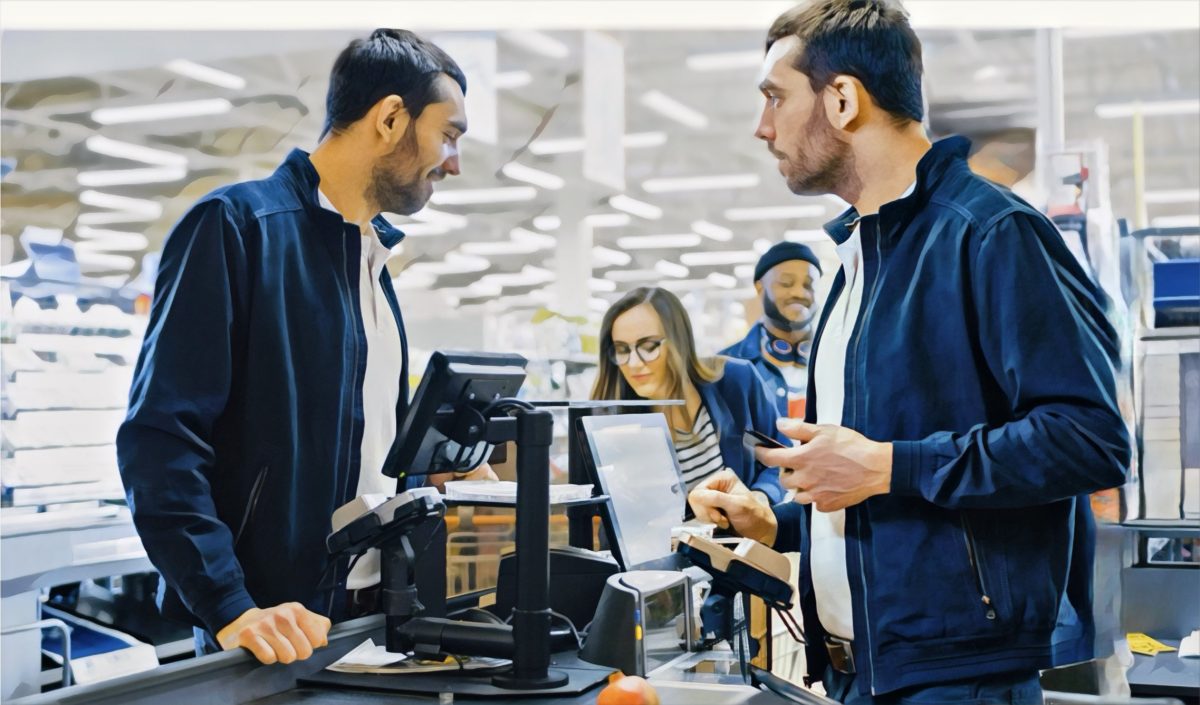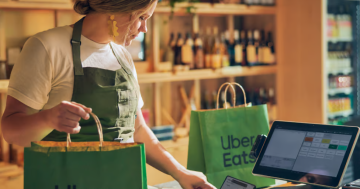
Increasingly, businesses are asking the customer to ‘serve’ themselves. Photo: gorodenkoff (Photoshop Chris Roe).
As a member of Generation X, I’m just old enough to remember the origin of the classic Aussie colloquialism, ‘servo’.
You see kids, in the previous century, the place where you stopped for petrol was known as a ‘service station’ because, they not only supplied fuel, but actual real-life customer service.
Back in the day, there was no ‘self’ attached to the service. It was something someone did for you, which is of course the literal definition of service.
At the servo, a bloke would stub out his smoke, wander out, fill up your car, clean your windscreen, have a yarn and maybe even check your tyres.
Sadly, this kind of service barely made it into the 80s and the truncated nickname lingers on as an ironic echo of a bygone era.
The term ‘self-service’ is a contradiction, yet increasingly our lives are becoming busier and busier as we are forced into the ‘convenience’ of serving our own way through checkouts, banks and countless automated processes on the phone and online.

Once upon a time, the ‘service’ in service station meant something. Photo: iStock/LydiaGoolia.
The first recorded use of ‘self-serve’ was in the early 20th century when the US supermarket chain Piggely-Wiggely allowed shoppers to wander the aisles and collect their own groceries rather than handing a list to an assistant who then filled the order.
The new free-range approach to shopping proved not only to be great fun for the shoppers, but it meant less staff and more profits for the shop – win-win!
The first self-serve gas stations in the 1940s offered motorists a five-cent discount if they were prepared to pump their own gasoline. Fair enough. The labour was outsourced to the customer who was rewarded for the inconvenience.
But somewhere along the way, self-service spiralled out of control to the point that self-serving companies placed shareholders ahead of customers and cost efficiency ahead of convenience.
How many times have you walked into a bank or insurer or phone shop or ‘service provider’ for help, only to be told to “go online”?
These days, when you have an issue with your phone/electricity/gas bill, you almost need to take a day off work to allow enough time to navigate the complex web of menu options, on-hold music and international call centres.
We really should be able to charge them for our time and then have it deducted from our phone/electricity/gas bill.
Admittedly, Aussies do sometimes jump at the chance to serve themselves.
My kids love it when they can take charge of the premix soda machine at a restaurant to brew their own Coke/Fanta/raspberry concoctions. And there were plenty of blokes in the 2000s who were sucked into the machismo of cooking their own steak at the pub and paying for the privilege.

A smug couple taunts those waiting in the cue as they take a trolley through the self-service aisle. Photo: Jovanmandic.
Some shoppers love the self-service checkouts at the supermarket that allow you to avoid making eye contact or small talk with an unknown human. However, it is already clear that we are headed down a serviceless supermarket slippery slope.
What began as an automated convenience that replaced the ’10-items-or-less’ lanes and allowed for a quick pop-in for a barbecue chook and toothpaste, has expanded to the point where we now have unattended checkouts and queues backed up into the fruit and veg.
All of a sudden, it’s become acceptable to roll into the self-service lane with a fully laden trolley. I’ve seen couples working in tandem to painstakingly unload items from one end of the trolley while their partner awkwardly bags and replaces the scanned items on the other side. All the while, dozens of in-a-hurry shoppers with armfuls of sundries are left standing next to the avocados and regretting their decision not to grab a basket on the way in.
Where will the madness end? Will customer service make some kind of ironically cool hipster comeback?
Perhaps robots are the answer, or will that just lead to a whole new kind of mechanised service madness?
Rant over.










